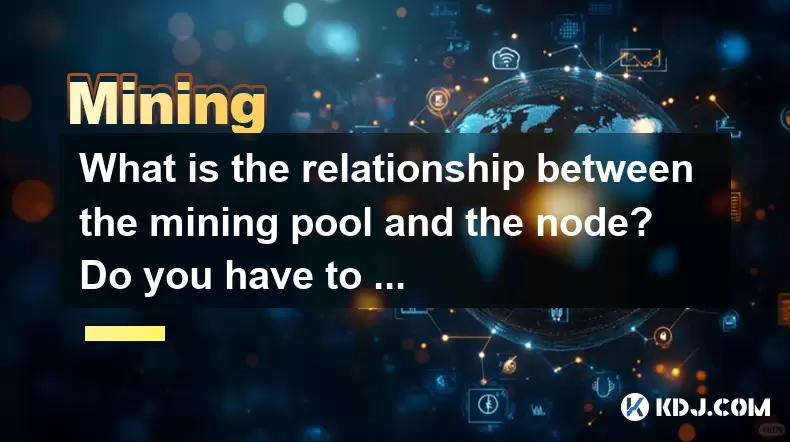-
 Bitcoin
Bitcoin $107,275.1551
-0.32% -
 Ethereum
Ethereum $2,485.3056
1.77% -
 Tether USDt
Tether USDt $1.0005
0.03% -
 XRP
XRP $2.2223
1.31% -
 BNB
BNB $657.7608
1.39% -
 Solana
Solana $156.3566
3.02% -
 USDC
USDC $0.9999
0.01% -
 TRON
TRON $0.2791
1.09% -
 Dogecoin
Dogecoin $0.1651
0.45% -
 Cardano
Cardano $0.5738
2.78% -
 Hyperliquid
Hyperliquid $40.2672
5.82% -
 Bitcoin Cash
Bitcoin Cash $517.5487
5.30% -
 Sui
Sui $2.7981
-0.40% -
 Chainlink
Chainlink $13.3500
-0.36% -
 UNUS SED LEO
UNUS SED LEO $9.1220
1.12% -
 Avalanche
Avalanche $17.9515
-0.32% -
 Stellar
Stellar $0.2361
-0.44% -
 Toncoin
Toncoin $2.9423
2.33% -
 Shiba Inu
Shiba Inu $0.0...01145
-0.68% -
 Litecoin
Litecoin $86.1693
-0.63% -
 Hedera
Hedera $0.1493
0.64% -
 Monero
Monero $315.1374
1.81% -
 Polkadot
Polkadot $3.4002
-0.73% -
 Dai
Dai $1.0001
0.03% -
 Bitget Token
Bitget Token $4.5413
-1.35% -
 Ethena USDe
Ethena USDe $1.0002
-0.01% -
 Uniswap
Uniswap $7.1733
-0.57% -
 Aave
Aave $274.0465
-0.23% -
 Pepe
Pepe $0.0...09810
2.24% -
 Pi
Pi $0.5101
-3.10%
What is the relationship between the mining pool and the node? Do you have to rely on the mining pool?
Mining pools rely on nodes to validate and broadcast solved blocks, ensuring blockchain integrity, while nodes benefit from pools' contributions to network security and speed.
May 14, 2025 at 08:36 pm

The relationship between a mining pool and a node in the cryptocurrency ecosystem is intricate and fundamental to understanding how blockchain networks operate. A mining pool is a group of miners who work together to solve complex mathematical problems to validate transactions and add them to the blockchain. On the other hand, a node is a computer connected to the blockchain network, which stores, validates, and relays transactions and blocks. This article will delve into the relationship between mining pools and nodes, and explore whether miners must rely on mining pools.
The Role of Nodes in the Blockchain Network
Nodes are the backbone of any blockchain network. They maintain a complete or partial copy of the blockchain and are responsible for validating transactions and blocks. Nodes ensure the integrity and security of the network by verifying that new transactions and blocks comply with the network's rules. There are different types of nodes, such as full nodes, which store the entire blockchain, and light nodes, which store only the headers of the blockchain.
In the context of mining, nodes play a crucial role. When a miner solves a block, it is first broadcast to the nodes on the network. These nodes then verify the block and, if it is valid, relay it to other nodes until it reaches the majority of the network. This process ensures that the blockchain remains decentralized and secure.
The Function of Mining Pools
Mining pools were created to address the increasing difficulty of mining cryptocurrencies. As the network's hash rate grows, it becomes more challenging for individual miners to solve blocks and earn rewards. A mining pool allows miners to combine their computational power, increasing their chances of solving blocks and receiving rewards more consistently.
When a mining pool solves a block, the reward is distributed among the pool members based on their contributed hash power. This system allows miners with less powerful hardware to participate in the mining process and earn a steady income, rather than waiting for the rare event of solving a block on their own.
The Relationship Between Mining Pools and Nodes
The relationship between mining pools and nodes is symbiotic. Mining pools rely on nodes to validate and broadcast the blocks they solve. Without nodes, the blocks solved by mining pools would not be recognized by the network, rendering their efforts futile. Conversely, nodes benefit from mining pools as they help maintain the network's security and transaction processing speed.
Mining pools typically operate their own nodes to ensure that the blocks they solve are quickly broadcast to the network. These nodes are often full nodes, which means they store the entire blockchain and can validate transactions and blocks independently. By running their own nodes, mining pools can reduce the time it takes for their solved blocks to be recognized by the network, thereby increasing their chances of receiving the block reward.
Do Miners Have to Rely on Mining Pools?
While mining pools offer significant advantages, miners are not obligated to join them. Solo mining is an alternative where miners work independently to solve blocks. The primary advantage of solo mining is that miners receive the entire block reward if they successfully solve a block. However, the likelihood of solving a block solo is much lower compared to mining in a pool, especially for miners with limited computational resources.
To decide whether to join a mining pool or mine solo, miners should consider several factors:
- Hardware Capabilities: Miners with more powerful hardware are more likely to be successful at solo mining. Those with less powerful hardware may find it more beneficial to join a mining pool.
- Financial Stability: Solo mining can be financially unstable due to the unpredictability of solving blocks. Mining pools provide a more consistent income stream.
- Network Difficulty: The difficulty of the network affects the likelihood of solving blocks. Higher difficulty levels make solo mining more challenging.
Joining a Mining Pool: A Step-by-Step Guide
For miners interested in joining a mining pool, the process involves several steps:
- Choose a Mining Pool: Research and select a reputable mining pool that aligns with your mining goals. Consider factors such as pool fees, payout structures, and the pool's reputation.
- Register an Account: Visit the mining pool's website and create an account. You will need to provide an email address and set up a password.
- Set Up Mining Software: Download and install mining software compatible with the chosen mining pool. Popular options include CGMiner, EasyMiner, and MultiMiner.
- Configure the Mining Software: Open the mining software and enter the pool's URL, your username, and any other required information. This information is typically provided by the mining pool after registration.
- Start Mining: Once the software is configured, start the mining process. The software will connect to the mining pool and begin contributing your hash power to the pool's efforts.
- Monitor and Adjust: Regularly monitor your mining performance and adjust settings as necessary. Keep an eye on the pool's performance and any changes to the network's difficulty.
Running a Node: A Step-by-Step Guide
For those interested in running a node, the process involves the following steps:
- Choose a Blockchain: Decide which blockchain you want to support. Popular options include Bitcoin, Ethereum, and other major cryptocurrencies.
- Select Node Software: Download and install the appropriate node software for the chosen blockchain. For Bitcoin, you can use Bitcoin Core; for Ethereum, you can use Geth or Parity.
- Configure the Node: Open the node software and configure it according to the blockchain's requirements. This may involve setting up ports, configuring firewall settings, and adjusting storage options.
- Synchronize the Blockchain: Start the node and allow it to synchronize with the blockchain. This process can take several hours or days, depending on the size of the blockchain and your internet connection.
- Maintain the Node: Regularly update the node software and monitor its performance. Ensure that your node remains connected to the network and that it is properly validating and relaying transactions and blocks.
Frequently Asked Questions
Q: Can a mining pool operate without nodes?
A: No, a mining pool cannot operate without nodes. Nodes are essential for validating and broadcasting the blocks solved by the mining pool. Without nodes, the blocks solved by the mining pool would not be recognized by the network.
Q: Are there any risks associated with joining a mining pool?
A: Yes, there are several risks associated with joining a mining pool. These include pool fees, the potential for pool operators to engage in fraudulent activities, and the risk of the pool becoming too large and centralizing the network's hash power.
Q: How does the size of a mining pool affect its performance?
A: The size of a mining pool can significantly impact its performance. Larger pools have a higher combined hash rate, which increases their chances of solving blocks more frequently. However, larger pools also attract more miners, which can dilute individual rewards. Conversely, smaller pools may offer higher individual rewards but solve blocks less frequently.
Q: Can a node be used for mining?
A: While a node is not used directly for mining, it is essential for the mining process. A node validates and broadcasts the blocks solved by miners, ensuring that the blockchain remains secure and decentralized. Some mining pools operate their own nodes to streamline this process.
Disclaimer:info@kdj.com
The information provided is not trading advice. kdj.com does not assume any responsibility for any investments made based on the information provided in this article. Cryptocurrencies are highly volatile and it is highly recommended that you invest with caution after thorough research!
If you believe that the content used on this website infringes your copyright, please contact us immediately (info@kdj.com) and we will delete it promptly.
- OKX and Binance Delist Trading Pairs: What's Going On?
- 2025-07-01 02:30:12
- Pepeto vs. Shiba Inu: Can the New Meme Coin Dethrone the King?
- 2025-07-01 02:50:11
- Saylor, Bitcoin, Holdings: Strategy's Crypto Empire Grows
- 2025-07-01 02:30:12
- Coinbase, Altcoins, and Listings: What's the Buzz?
- 2025-07-01 00:30:11
- Chainlink's Bullish Signals: Investors Bet on Long-Term Value
- 2025-07-01 00:50:12
- CICADA Finance Soars on BNB Chain: A TGE Deep Dive
- 2025-07-01 01:30:11
Related knowledge

What is liquidity mining in DeFi? How to participate and calculate the income?
Jun 20,2025 at 03:21pm
Understanding Liquidity Mining in DeFiLiquidity mining is a core concept in the decentralized finance (DeFi) ecosystem that allows users to earn rewards by providing liquidity to decentralized exchanges (DEXs) or lending platforms. In traditional finance, liquidity providers are usually institutional players, but DeFi democratizes this process, enabling...

What is the mining mechanism of digital currency? What hardware and cost investment are required?
Jun 23,2025 at 06:29am
Understanding the Mining Mechanism of Digital CurrencyThe mining mechanism of digital currency is a foundational process that ensures transaction validation and network security. In most Proof-of-Work (PoW) cryptocurrencies like Bitcoin, miners compete to solve complex mathematical puzzles using computational power. The first miner to find a valid solut...

Analysis of hybrid mining protocol: PoW+PoS hybrid profit calculation
Jun 23,2025 at 10:15am
Understanding Hybrid Mining ProtocolsIn the realm of blockchain technology, consensus mechanisms are pivotal in maintaining network integrity and transaction validation. A hybrid mining protocol combines two or more consensus algorithms to achieve a balance between security, decentralization, and energy efficiency. The most commonly adopted hybrid model...

How to operate option mining? Hedging strategy and profit structure
Jun 21,2025 at 03:29pm
What is Option Mining?Option mining refers to a decentralized finance (DeFi) strategy where participants provide liquidity or take specific derivative positions in options protocols to earn rewards. Unlike traditional yield farming, option mining often involves liquidity provision for options markets, allowing users to generate returns through premiums ...

What are the advantages of Layer2 mining? Gas saving and project inventory
Jun 20,2025 at 04:50am
Understanding Layer2 Mining and Its SignificanceLayer2 mining refers to the process of participating in decentralized applications or protocols that operate on top of a primary blockchain (such as Ethereum) using scaling solutions like Optimism, Arbitrum, or zkSync. Unlike traditional mining on Layer1 blockchains, which often involves high computational...

Is contract mining safe? Key points of smart auditing and vulnerability prevention
Jun 19,2025 at 08:08pm
Understanding Contract Mining in the Cryptocurrency SpaceContract mining refers to a method within blockchain ecosystems where users can participate in mining operations through smart contracts. Unlike traditional mining, which requires physical hardware and technical expertise, contract mining allows participants to invest funds into a mining pool or p...

What is liquidity mining in DeFi? How to participate and calculate the income?
Jun 20,2025 at 03:21pm
Understanding Liquidity Mining in DeFiLiquidity mining is a core concept in the decentralized finance (DeFi) ecosystem that allows users to earn rewards by providing liquidity to decentralized exchanges (DEXs) or lending platforms. In traditional finance, liquidity providers are usually institutional players, but DeFi democratizes this process, enabling...

What is the mining mechanism of digital currency? What hardware and cost investment are required?
Jun 23,2025 at 06:29am
Understanding the Mining Mechanism of Digital CurrencyThe mining mechanism of digital currency is a foundational process that ensures transaction validation and network security. In most Proof-of-Work (PoW) cryptocurrencies like Bitcoin, miners compete to solve complex mathematical puzzles using computational power. The first miner to find a valid solut...

Analysis of hybrid mining protocol: PoW+PoS hybrid profit calculation
Jun 23,2025 at 10:15am
Understanding Hybrid Mining ProtocolsIn the realm of blockchain technology, consensus mechanisms are pivotal in maintaining network integrity and transaction validation. A hybrid mining protocol combines two or more consensus algorithms to achieve a balance between security, decentralization, and energy efficiency. The most commonly adopted hybrid model...

How to operate option mining? Hedging strategy and profit structure
Jun 21,2025 at 03:29pm
What is Option Mining?Option mining refers to a decentralized finance (DeFi) strategy where participants provide liquidity or take specific derivative positions in options protocols to earn rewards. Unlike traditional yield farming, option mining often involves liquidity provision for options markets, allowing users to generate returns through premiums ...

What are the advantages of Layer2 mining? Gas saving and project inventory
Jun 20,2025 at 04:50am
Understanding Layer2 Mining and Its SignificanceLayer2 mining refers to the process of participating in decentralized applications or protocols that operate on top of a primary blockchain (such as Ethereum) using scaling solutions like Optimism, Arbitrum, or zkSync. Unlike traditional mining on Layer1 blockchains, which often involves high computational...

Is contract mining safe? Key points of smart auditing and vulnerability prevention
Jun 19,2025 at 08:08pm
Understanding Contract Mining in the Cryptocurrency SpaceContract mining refers to a method within blockchain ecosystems where users can participate in mining operations through smart contracts. Unlike traditional mining, which requires physical hardware and technical expertise, contract mining allows participants to invest funds into a mining pool or p...
See all articles

























































































